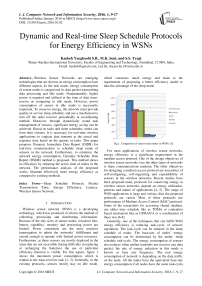Dynamic and Real-time Sleep Schedule Protocols for Energy Efficiency in WSNs
Автор: Kaebeh Yaeghoobi S.B., M.K. Soni, S.S. Tyagi
Журнал: International Journal of Computer Network and Information Security(IJCNIS) @ijcnis
Статья в выпуске: 1 vol.8, 2016 года.
Бесплатный доступ
Wireless Sensor Networks are emerging technologies that are diverse on energy consumption from different aspects. In the task mode, energy consumption of sensor nodes is categorized in, data packet transmitting, data processing and idle mode. Fundamentally, higher power is required and utilized at the time of data trans-receive as comparing to idle mode. However, power consumption of sensor in idle mode is necessarily important. To conserve energy, the network must provide quality of service sleep schedule, and use a mechanism to turn off the radio receiver periodically in coordinating method. Moreover, through dynamically round task management of sensors, significant energy saving can be achieved. Based on tasks and sleep schedules, nodes can form their clusters. It is necessary for real-time wireless applications to cogitate data transmit at the actual and response time based on the queries or tasks. This paper proposes Dynamic Immediate Data Report (DIDR) for real-time communication to schedule sleep mode of sensors in the network. Furthermore, to minimize the network energy consumption, Dynamic Schedule Data Report (DSDR) method is proposed. This method shows its efficiency by reducing the active time of nodes in the network. The performance analysis of the proposed works, illustrate effectively more energy efficiency as compared to existing methods.
Sleep Schedule Protocol, Predict Transmission Time, Energy Efficiency, Latency, Wireless Sensor Network
Короткий адрес: https://sciup.org/15011487
IDR: 15011487
Текст научной статьи Dynamic and Real-time Sleep Schedule Protocols for Energy Efficiency in WSNs
Wireless sensor network (WSN) is a developing technology, which has promised to reform the method of collecting, processing and distributing information. Because of the tiny sizes of sensor nodes, resources like, battery capability, memory and processing power are limited. Power constraints are the most sensitive interrogation to admit the networks’ fulfillment and extend enough to operate with limited power resources. Furthermore, as these sensors are mostly deployed in the areas that are not accessible (facing difficulty in replacing or recharging the batteries) the use of particular efficiency theorem is visible. For this aspect, figure 1 shows the maximum power consumption, which is related to the trans-receiver task [1, 2]. Generally, in the existing protocols, sensors mostly stay on idle mode, which consumes much energy and leads to the requirement of proposing a better efficiency model to take the advantage of the sleep mode.
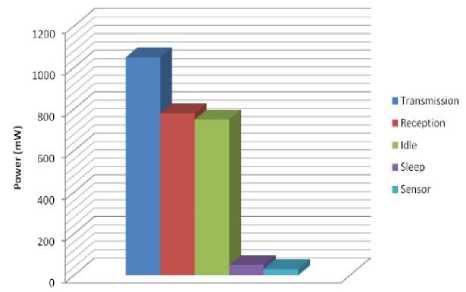
Fig.1. Comparison of sensor node modes in WSNs [3]
For most applications of wireless sensor networks, energy efficiency is a significant requirement in the medium access protocol. One of the design objectives of wireless sensor networks over the other types of networks is share communications medium. The other objectives for designing a medium access protocol are necessities of self-configuring, self-organizing and expendability of sensors in the wireless networks. Recent studies have been proposed many protocols for conserving energy in wireless sensor networks, depend on energy utilization, patterns and nature of applications [4, 5]. The range of WSN applications is large and various, thus the proposed protocols are varied. Most of these protocols use performance of Medium Access Control (MAC) protocol. Some of the researchers for accessing shared medium, use either time schedule like as TDMA or contention based mechanism like as CSMA/CA or a combination of these two [6-8].
Generally, one of the techniques that can fulfill WSN energy efficiency is reducing task-cycle of sensors' operations. The task-cycle can be reduced in the sleep schedule of nodes. The base-rate of nodes’ energy consumption can be determined by the nodes’ sleep schedule task-cycle. The energy consumption of sensors also reduces when neither transmits nor receives any data packet; the rate of energy reduction in this mode is known as base rate frequency. The real energy consumption of network is depending on the data traffic on the node. All the nodes have the equivalent base-rate energy consumption if all nodes have the same task-cycle.
Synchronous sleep scheduling procedure is depended on clock synchronization between all nodes in the network. The transmitter nodes and receivers are aware of sleep/awake periods of each other that base on their needs, radio may on and transmit packets.
A major amount of sensors in wireless networks has to wake up more than once per frame. Some nodes’ energy drain faster than the other nodes and die earlier, and that is because of all the nodes have not the same task-cycle. This reduces the average lifespan of nodes, consequently, reduces the usefulness of wireless network lifespan. Eventually, during the network lifetime, those nodes, which sleep less, may die earlier. Then, the non-uniform lifespan of the nodes creates no coverage area within the network, and this makes a poor communication, monitoring and data gathering in the wireless sensor network.
Apparently, energy management protocol of application-ordinate timing has a major effect to improve sleep schedules. Nevertheless, the design of a specific protocol is challenging. In CSMA/CA protocol random backbone cause communication delay over channel contention. Another issue is jitter (packet delay variation), which accumulate due to multi-hop network. Accordingly, in multi-hop communication when data generate periodically by nodes, the task-cycle will be reformed as no fixed interval. Furthermore, due to different starting times, when there are numerous periodic data streams in network communication, the transmission of data reports occurs at no fixed interval times.
The purpose of this paper is to propose a sleep schedule to manage activities of sensor radio, in communication topology to minimize the sleep latency and through periodic sleep, provide energy efficiency. The design principles of the propose methods are (1) achieving predictable timing through shaping traffic inside the network, and (2) take advantage of applicationordinate to forms transmission timing.
-
II. Related Works
Based on the study of previous works, they have shown the major energy consumption in a wireless network is the ideal listening mode of nodes [9-13]. As discussed earlier, the ideal mode of sensor utilizes energy nearly same as receiving mode of the node. The best desire in a wireless sensor network is to turn off the radio, when the traffic load is very light (when the node is not in the transmission or receiving mode).
The concept of using traffic shaping of sleep scheduling progress is used to manage energy consumption that operates in the MAC layer [10, 14-17]. Sleep scheduling performed and presented at various scales and level of quality and conditions. TDMA (Time Division Multiple Access) protocols [15, 18, 19] allocate time slots for each node to adjust time; the nodes communicate on their slot times otherwise their radio is off. The analysis of TDMA protocol demonstrations that it is not working well in multi-hop sensor networks. The distributed algorithms present significant synchronization schedule in the multi-hop network compared to the centralized algorithms, which are deficient in large scale of networks [20]. Latency and Energy-Efficient Flexible TDMA (LEFT) [21] is an extension of TDMA protocol that supports multi-hop communication. The LEFT is combined MAC with routing protocol for data gathering from the number of source nodes to a master station. The LEFT also provides flexibility and increase channel utilization through slot seizing, which a non-holder can use slot when a holder does not have any data to transmit.
There are other researchers that their methods worked based on coarse-grained schedules; whereas each node communicates according to their fixed interval schedule, which there is an active window and a sleep window [22,
-
23] . However, these scheduling methods are not considering the characteristics of the workload.
The S-MAC [9] presents nodes periodic synchronize duty cycle as a mechanism to reduce idle listening. In S-MAC, every node follows a periodic active/sleep schedule. In the active period, nodes turn on to transmit/receive data. Due to the low duty cycle operation, the network is energy efficient, but the drawback is the S-MAC increases the packet delivery latency. Furthermore, in the source node, sampling need to be read when it is in sleep mode, and it must wait in the queue until the active mode period. Therefore, other nodes wait until the receiver gets active before it forward a packet from the previous hop. This major deficiency is known as sleep latency, and if all nodes have same schedule synchronization, then it has long schedule length that contains active period time plus the sleep period time.
In another research [24], to reduce sleep latency as well as energy efficient, they used adaptive listening. In the path of transmission, one or more nodes ahead can retain awake for additional time. This method is used in extension of the S-MAC, and T-MAC protocols [10, 25]. The result of this method is a reduction of sleep latency, but it increases slightly energy consumption, and it is not recommended for the long path communications.
The Power Save Mechanism (PSM) [26] topology, process the packet routing, which packets for the short time buffered by transmitter station (STA) and packets be delivered to destination later. The transmission occurs at the some agreed intervals. When the transmitter STA queue becomes empty, it turns to the sleep modes. To maintain the QoS besides energy conservation, an extension of PSM protocol introduced [27], which works for some WSN applications. This method used traffic indication map and organized data frame scheduling in the queue.
The other topology introduced for multi-hop wireless network is SPAN [28]. The SPAN is a distributed and randomized algorithm, and the sleep schedule decision is locally. That means nodes make local decisions on whether going to sleep mode or transmit backbone as a coordinator. The nodes' decision is based on benefit estimation of the node’s neighbors and energy availability, which how many of their neighbors will receive the benefit from that node to be awake.
Geographic adaptive fidelity [29] is a routing protocol that attempts to decrease energy consumption by turning off the power of unnecessary nodes. The GAFBone is an extension of GAF protocol with additional backbone in data communication [30]. Other approaches implemented, and used for power management protocols to provide communication backbone. The connected backbone is responsible, when other nodes sleep for routing the packets [16, 31]. The performance of backbone method is sufficient for real-time communication routing. However, it cannot conserve any energy and while there is no need for any communication, backbone is still awake. In some applications of wireless sensor network when the workload is light, the backbone activity is completely unnecessary and not accepted. Furthermore, the backbone method cannot shape the traffic communication or characterize the workload.
In comparison of the above-mentioned, the novel DIDR and DSDR proposed protocols work based on timing that required by application and lightweight traffic shaping for data reporting. The algorithms present minimum communication delay and overhead. They work dynamically and can efficiently handle the data aggregation workload of numerous queries. These features fulfill the requirement of real-time communication and energy conserving in the wireless sensor network.
-
III. Protocol Design
To design an optimal model, the important parameters consider, such as, for a query each node generated data report at the time periods, and the network is designed in the form of a tree, which can be clustered for routing protocols. This section presents how proposed Dynamic Immediate Data Report and Dynamic Schedule Data Repot protocols improve the energy efficiency with minimizing transmission delay. The DIDR and DSDR protocols work and analysis based on query service. A user through the base-station, distribute query to all the nodes in the network. At the base-station when the query is distributing, query service builds a routing tree to facilitate data aggregation.
A set of source nodes, aggregates data based on registered queries. At the time period T nodes generate data report. The starting time of data reports by nodes is Ø . The data generate by child nodes as the starting of a query report, and the parent nodes wait for receiving data from their children. The node aggregates data reports and forward it to its parent. There is a possibility of nodes' failure, which in that situation, nodes may time out and before receiving data from all their children forward data reports to their parents. Furthermore, considering multihop constrain such as delay and jitter in data report transmission, protocol design with no fixed interval time, can generate numerous queries with various timing features.
-
A. Local Sleep Schedule Algorithm
The propose sleep schedule algorithm used to turn sensors' radio off and on. From the viewpoint of the sleep schedule, a node can be either in sleep mode or in active mode. The node is in active mode when it forward or receive the data report; else, it is in sleep mode. According to the time priorities based on schedule periods and workload, the sleep schedule algorithm decides a node status. All the notations are summarized in Table 1.
Table 1. List of Notifications
|
T |
Time Period |
|
i |
Query |
|
dr |
Data Report |
|
x |
Child Node |
|
Receive()/Forward() |
Data Report Receive Time / Forward Time |
|
Time A |
Active Mode |
|
Time S |
Sleep Mode |
|
dl |
Assigned Deadline Time to Node |
|
h dl |
Local Deadline, based on Level of Node in Tree |
|
l |
Level of Node in Tree |
|
NAgg time |
Time takes a node Receive all Data from all its Children and Aggregate all Data |
|
NRec time |
Time a node stays Awake to Receive Data |
|
NRollup time |
Maximum Time it takes to a node Collects all Data |
|
CAgg time |
Time takes for nodes’ Children to Compute Data and apply aggregation |
The sleep schedule algorithm is sharing timing properties of nodes and traffic shaper of the network, based on queries. The nodes determine a query as follows. As mentioned before, structure of nodes is tree topology form; thus, during each query cycle, node wait for the data report from its children. The function of expected transmit time of data repot ( drth ) for the query i is Forward (i, dr) ; and the function of expected receiving time of data report from x child is Receive (i, dr, x) . The forward time is the time period that data to be forwarded to the MAC layer intended for transmission. The proposed sleep schedule provides tracking of queries routed via the node. The node with i.Receiven (x) function, store the estimated next time of forward packet for each child. The next estimated time to forward aggregate data to parent will be stored in i.Forward n . The traffic shaper controls the time of the next data to be transmitted. This information will be added to schedule the algorithm for receiving data, use Receive (i, dr+1, x), and for implementation of forwarding data, use the Forward (i, dr+1) .
Status()
Time A = min ({Time | Time = i.Forward n ∀ i , x} ∪ {Time | Time = i.Receiven(x) ∀ i })
TimeS = TimeA - Timenow if (TimeS > minimum time the node needs stay sleep)
sleep mode
Timew = TimeS – time takes the node changes its status (radio Off to On)
OrderForward(i, Forward (i, dr+1))
i.Forwardn = Forward (i, dr+1) Status()
OrderReceive(i, Receive (i, dr+1, x), c) i.Receiven(x) = Receive (i, dr+1, x) Status()
First, the node after transmitting data, report checks its status. If TimeA, which is a minimum expected time of forward and receive times for all queries, is larger than current time Timenow, node stays sleep until the time of active status. In another case, the node is active since receiving or transmits its data reports. When a node is not in the transmission status, the sleep schedule algorithm turns off the node’s radio. However, to prevent any delay, the time cost of changing power status must be measured. Though, the minimum time that a node needs to stay sleep is considered. Since changing radio’s power is not more than its active status power, the time a node takes to change its status from off to on or back to sleep mode, which both must be calculated. At the time of setup, when a query is propagated from base-station, the radio of all nodes is on even if the sleep schedule algorithm not expected any data transmission. During setup time, queries request and data reports can be transmitted, but beyond the set up time only data reports can be transmitted.
Because of existing jitter (packet delay variation) in a wireless network, prediction of transmission time is difficult. However, when actual data transmission times are matched to predict data transmission time, the proposed schedule algorithm achieves maximum sleep time. To prevent communication failure, the algorithm synchronizes the expected active time of the node to receive data with the expected forward time of child nodes. Assuming the data report is ready to be forward before its predicable of forward time, the node stays on and buffer data until the receiver awakes time.
The important feature of proposed sleep schedule is its flexibility of sleep time for numerous queries; and it does not need TDMA topology for scheduling. In addition, each query cost is according to the node level in the routing tree. It works locally, thus it shows a more efficient in large networks.
-
B. Dynamic Immediate Data Report (DIDR)
The DIDR proposed method used the advantage of a periodically transmission data report from leaves of tree topology. Assume that each node aggregate data, and nodes wait to receive data from their children, thus all data together will be aggregate then send to the basestation. In the DIDR, each child node sends its aggregated data to its parent and parent node immediately forward aggregated data report. It means a parent node is not waiting to receive all of its children data reports to aggregate all data.
The advantage of DIDR is that in this protocol, there is no transmission delay; however, because of the technique, leaf nodes turn on their radio when a data report is generated, and it causes waste of energy. Therefore, to avoid this problem same deadline dl will be assigned to nodes. Based on the node in which level of tree, different local deadline time hdl will be allocated to support multihop transmission without collision, as the hdl is equal to the deadline divided by maximum level of the tree.
To improve energy consumption in DIDR schedule, a reduction difference between forward and receive data report expected time and the actual time is required. At this conform, query respectively forward time for a node of level l is:
Forward ( dr )= ∅ + dr × T + ℎ di × l (1)
The expected receive time for a node of level l is:
Receive ( dr )= ∅ + dr × T +ℎ at ×( I -1) (2)
If the data report generated after expected forwarding time, the node transmits it immediately; in another case, if the data report generates earlier than expected time, it buffers until the time.
If the level of a node is zero (last leaf of the tree/child node), then the time that a node stays awake to receive data NRectime from its children is zero. The time takes for nodes' children to compute and apply aggregate data is CAggtime . The NAggtime is the time that takes a node receive all data from all its children and aggregate all data reports. The maximum time it takes to a node to collect all data reports presents as NRolluptime .
Latency for each query describes as the maximum time that takes to transmit data report from any node to the base-station. The latency of DIDR calculates as the maximum level of the tree multiply by either local deadline time or NAggtime that one has maximum time.
Therefore,
NRectime
-
0 if I =0
={( NAggtlm= - ℎ ) ×( I -1)+ NRollupttme if ℎ ≤ NAggtlme and I ≠0
-
(/V Rolluptime if ℎ > NAggtime and I ≠0
The DIDR method has a decent query latency and good energy efficiency while its local deadline is close to NAggtime . Furthermore, the estimation of time takes for a node to receive all data and aggregate them is difficult, because of the dynamic nature of wireless sensor network. Accordingly, adjusting local deadline for DIDR is demanding; therefore, Dynamic Schedule Data Report is proposed to focus on DIDR limitation.
-
C. Dynamic Schedule Data Report (DSDR)
The proposed DSDR protocol adjusts the expected time of receiving and forward data report. This protocol is depending on multi-hop response and delay time of received data. The DSDR protocol uses this technique to control and operate data aggregation on multi-hop routing real-time wireless network.
The DSDR works as follows: to start, it settles expected transmission and receives time to start time of query Forward (0) = Receive (0) = Ø. After every round, depends on time spend for transmitting data report packets by node, DSDR sets the next expecting time as Forward(dr)=Forward(dr-1)+T . DSDR based on either the drth data is forward at the expected time or not performs differently. If the node receives all the data reports of its children before its forward time, and node could send aggregate data report at its time of Forward(dr), then next expected forward time will be calculated, as:
F о rward ( dr + 1) = F о rwar d(d)) + T (4)
Accordingly, parent after receiving aggregated data report, set next receiving time, as:
R ece ive (dr + 1) = R ece iv e^r) + T (5)
Hence, between a node and its parent, specific synchronization is not necessary. Even so, if data report to be transmitted over expected forward time (at time), which time>Forward(dr), then the node transmits data immediately and DSDR sets next expect time as:
Forward (dr + 1) = time + T (6)
Therefore, when this case happens data report contains of piggybacks packet with a new expected forward time of the data report, and based on that, parent sets its new expected receive data time.
In the DSDR, when a node gathers NAgg time for one time, then new adjusting is not necessary.
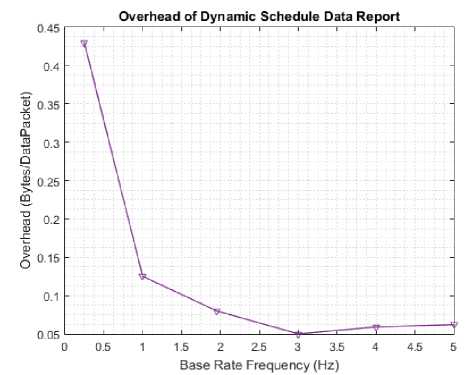
Fig.2. DSDR Overhead in Bytes per Packets
As it is already explained, when the node does not receive data at the expected time, start listening the channel until data receives. However, this wasting energy occurs only once, after that node set its receiving data from that child to the new expected receiving time. The DSDR adjusts network transmission based on maximum multi-hop delay. Furthermore, as it is presented in figure 2, DSDR overhead in case of a piggyback update for all tested queries rate is less than one bit per data packet. The result of low overhead indicates that the proposed DSDR is acceptable for bandwidth constrained wireless sensor networks.
-
IV. Performance Analysis
The main characteristics of the DIDR and DSDR protocols are their intensity upon dynamic routing wireless network. In this section, performance of proposed protocols based on the network constrains such as packet loss and changing network topology will analyze.
In terms of link failure or an incessant node circumstance, the routing protocol will control and reconfigure routing tree. In the node failure case, the parent and children of a failed node must progress and change the routing transmission. When a parent node discovers a failed child through constantly unsuccessful data report delivery, the parent eliminates its association with the failed child. Therefore, the parent no longer expects to receive the data reports from failed node, and expected time of the transmission data report from failed node will remove by sleep schedule protocol.
In terms of packet loss, there will be no need of any reoperation in DIDR protocol, and it is because of independent expected transmission time of parent and children. Nevertheless, packet loss effects on the DSDR protocol, when time updates decline the parent and child become unsynchronized. The DSDR needs to re-sync and updates schedule to continue its communication. If a node receives data report with update time after packet drops, the DSDR use updated time as the new stage. Otherwise, if the type of query contains acknowledgment, the node uses to piggyback update request in the acknowledgement packet, else, a new packet sent by the receiver node to request to update stage. Then, the sender forward new stage as an addition packet in the next data reports transmission. In terms of many packets lost in the network, the protocol consumes more energy, because the receiver stays awake to receive the sleep schedule to resync the expected time transmission.
-
A. Performance Measurement
The Matlab simulation tool is used to evaluate DIDR and DSDR protocols proficiency based on energy efficiency and query performance. The simulation experiment is done on 100 of sensors that use MAC protocol and deployed on a100m×100m region. The protocol analyses in several conditions such as one query per class with different base rate frequency (1Hz - 5 Hz), and when the base rate is stable and the number of queries is different. The node locations and start time of each query are different in each simulation run. To verify the performance of proposed protocols, they compare to the existing SPAN, PSM and Active-PSM schedule protocols.
-
B. Energy-Efficiency Analysis
Figure 3 presents the influence of increasing the query base rate based on the percentage of the task round for all nodes. The SPAN protocol has an uppermost percentage of the task cycle in the network, and it is because of maintaining a backbone for communication. The PSM protocol does not use communication backbone and consume energy less than SPAN. The energy consumption of PSM is because of transmission of overhead packets during the advertised window. The Active-PSM energy efficiency is better than PSM. DIDR and DSDR protocols have the lowermost task round and energy consumption, and DSDR had a slightly more task round than DIDR.
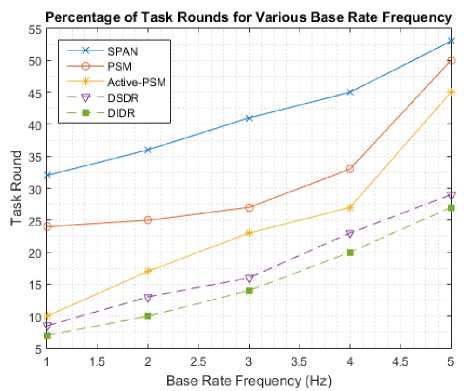
Fig.3. Task Round Percentage for Various Base Rate Frequency
As illustrated in figure 4, the DSDR performs better than the other protocols in this analysis. The experiment compares performance of protocols in case of increasing number of queries and the stable base rate. The Active-PSM use task cycle to manage energy efficiency and in the first five rounds of queries shows better performance than DIDR protocol. However, DSDR shows its workload adjustment without tuning in network traffic.
Figure 5 shows the energy performance of DSDR, DIDR and Active-PSM based on different numbers of transmitted packets. The experimented energy is utilized total power to transmit a single bit from child node to the root node of the network.
Moreover, DIDR and DSDT are more stable through their transmission cycle independency from level of nodes in the network tree. The DSDR spreads energy consumption more equally and can balance energy usability in large multi-hop routing network.
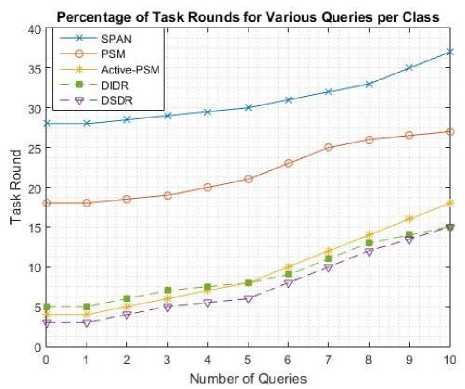
Fig.4. Task Round Percentage for Various Number of Queries
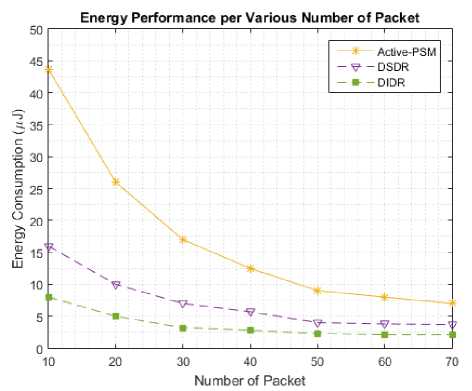
Fig.5. Energy Consumption per Various Number of packets
-
C. Performance of Query Analysis
The latency can be described as the maximum time that takes to transmit data report from any node to the basestation. The figure 6 demonstrates the experimental developments from a usual run when each class has one query. For instance, when the node ranks increases, there is a linear increase in the duty cycle. As it has been shown the duty cycle of DIDR and DSDR protocols are independent of the rank of the nodes, and it makes protocols more scalable.
The query latency based on the different base rate is experimented for protocols to evaluate latency of data transmission in the network. The result of this experiment is presented in figure 7. Active-PSM and SPAN have the lowest latency in comparing to the other protocols. Considering that Active-PSM protocol broadcast data from no traffic shaping, then it denies any transmission delay. In addition, SPAN protocol has an active backbone, so achieve low latency. Both DSDR and DIDR protocols have extremely lower latency than PSM protocol.
Various Task Round Ranks
Root=6 with No Leaf
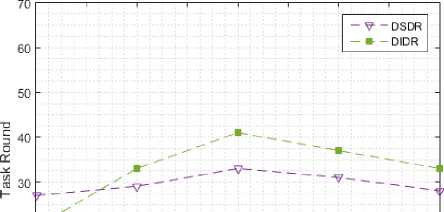

10 - -
0---------------------------------1---------------------------------1--------------------------------1---------------------------------1--------------------------------1--------------------------------1---------------------------------1--------------------------------
0 0.5 1 1.5 2 2.5 3 3.5 4
Depth of Tree
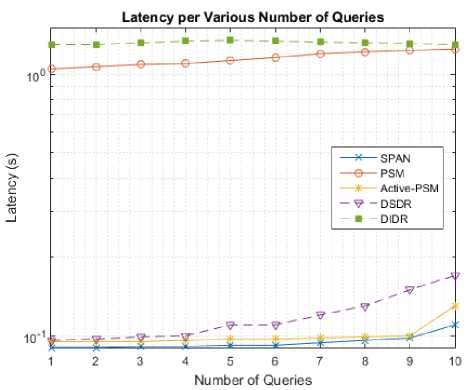
Fig.8. Latency per Various Number of Queries
Fig.6. Task Round in different Ranks
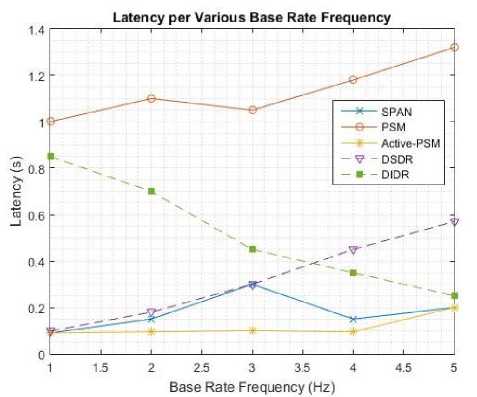
Fig.7. Latency of Queries per Various Base Rate Frequency
In the PSM protocol, latency is influenced via the temporal connection between transmission workload and their periodic sleep schedule. Generally, data report buffered for the reasonable amount of time, but it caused higher query latency. This problem has effected on the PMS protocol. The local deadline of DIDR protocol is set to the period of the query, thus its latency decrease when the rate increases.
Figure 8 shows experiment analysis of latency while the base rate is stable, and the number of queries is increased. The determination of experiment is similar to the pervious deliberated analysis. However, the latency of DIDR is steady when the base rate also is stable. The DSDR protocol present lower latency compares to DIDR protocol.
The result shows the DIDR and DSDR protocols distribute energy consumption more equally in the network, and have higher scalability of the network with the large routing trees.
-
V. Conclusions
This paper introduced DIDR and DSDR protocols, two novel sleep schedule that assertively manage power scheme and transmission timing of wireless sensor network real-time applications. These proposed protocols simply adjust with the existing queries to support the large range of WSN application. The DIDR and DSDR protocols work in a layer between MAC protocol and query service layer, and do not need exceptional support for managing scheduling from the MAC layer.
Moreover, significant energy conservation is the main specification of the proposed protocols. Furthermore, as performance analysis illustrated, the proposed protocols are capable of minimizing transmission delay. For instance, the simulation results showed the DSDR protocol obtained 38 to 87 percent lower task cycle of nodes compared to the SPAN protocol, and 36 to 98 percent lower latency than PSM protocol. Correspondingly, the DSDR protocol is particularly suitable for wireless networks, which operate in a dynamic environment with energy and time limitations. The DIDR and DSDR protocols are capable of support other communication designs like data dissemination. The future work interest is to use these protocols in the real-time e-Health application and analyzes performance of protocols of profound data transmission.
Список литературы Dynamic and Real-time Sleep Schedule Protocols for Energy Efficiency in WSNs
- Kosar, R., I. Bojaxhiu, E. Onur and C. Ersoy, "Lifetime extension for surveillance wireless sensor networks with intelligent redeployment". J. Netw. Comput. Appl. 34(6), 2011, pp. 1784-1793.
- Yaeghoobi S. B., K., S.S. Tyagi, M.K. Soni and O.M. Ebadati E. "SAERP: An energy efficiency Real-time Routing protocol in WSNs". in Optimization, Reliabilty, and Information Technology (ICROIT), 2014 International Conference on. 2014, pp. 249-254.
- Yaeghoobi S. B., K., M.K. Soni, S.S. Tyagi and O.M. Ebadati E., "Impact of NP-Complete in Triangle Segments Tree Energy Efficiency Model in Wireless Sensor Networks". J. Basic. Appl. Sci. Res. 3(9), 2013, pp. 8.
- Tauber, M., S.N. Bhatti and Y. Yu. "Application level energy and performance measurements in a wireless LAN". in Proceedings of the 2011 IEEE/ACM International Conference on Green Computing and Communications. IEEE Computer Society 2011, pp. 100-109.
- Wang, X., Scheduling and Congestion Control for Wireless Internet. 2013: Springer Publishing Company, Incorporated. 70.
- Brownfield, M.I., K. Mehrjoo, A.S. Fayez and N.J.I. Davis. "Wireless sensor network energy-adaptive mac protocol". in Consumer Communications and Networking Conference, 2006. CCNC 2006. 3rd IEEE. 2006, pp. 778-782.
- Qingchun, R. and L. Qilian. "An energy-efficient MAC protocol for wireless sensor networks". in Global Telecommunications Conference, 2005. GLOBECOM '05. IEEE. 2005, pp. 5 pp.
- Doudou, M., D. Djenouri, N. Badache and A. Bouabdallah, "Synchronous contention-based MAC protocols for delay-sensitive wireless sensor networks: A review and taxonomy". Journal of Network and Computer Applications. 38, 2014, pp. 172-184.
- Ye, W., J. Heidemann and D. Estrin, "Medium access control with coordinated adaptive sleeping for wireless sensor networks". Networking, IEEE/ACM Transactions on. 12(3), 2004, pp. 493-506.
- Dam, T.v. and K. Langendoen, An adaptive energy-efficient MAC protocol for wireless sensor networks, in Proceedings of the 1st international conference on Embedded networked sensor systems. 2003, ACM: Los Angeles, California, USA. p. 171-180.
- Cerpa, A., J.L. Wong, L. Kuang, M. Potkonjak and D. Estrin. "Statistical model of lossy links in wireless sensor networks". in Information Processing in Sensor Networks, 2005. IPSN 2005. Fourth International Symposium on. 2005, pp. 81-88.
- Cohen, K. and A. Leshem, "Energy-Efficient Detection in Wireless Sensor Networks Using Likelihood Ratio and Channel State Information". Selected Areas in Communications, IEEE Journal on. 29(8), 2011, pp. 1671-1683.
- Byun, H. and J. Yu, "Adaptive duty cycle control with queue management in wireless sensor networks". Mobile Computing, IEEE Transactions on. 12(6), 2013, pp. 1214-1224.
- Rajendran, V., J.J. Garcia-Luna-Aveces and K. Obraczka. "Energy-efficient, application-aware medium access for sensor networks". in Mobile Adhoc and Sensor Systems Conference, 2005. IEEE International Conference on. IEEE 2005, pp. 8 pp.-630.
- Rajendran, V., K. Obraczka and J.J. Garcia-Luna-Aceves, "Energy-efficient, collision-free medium access control for wireless sensor networks". Wireless Networks. 12(1), 2006, pp. 63-78.
- Tseng, Y.-C., C.-S. Hsu and T.-Y. Hsieh, "Power-saving protocols for IEEE 802.11-based multi-hop ad hoc networks". Computer Networks. 43(3), 2003, pp. 317-337.
- Arifuzzaman, M., M. Matsumoto and T. Sato, "An intelligent hybrid MAC with traffic-differentiation-based QoS for wireless sensor networks". Sensors Journal, IEEE. 13(6), 2013, pp. 2391-2399.
- Junhua, Z., C. Shan, B. Bensaou and H. Ka-Lok. "Tradeoff Between Lifetime and Rate Allocation in Wireless Sensor Networks: A Cross Layer Approach". in INFOCOM 2007. 26th IEEE International Conference on Computer Communications. IEEE. 2007, pp. 267-275.
- Dousse, O., P. Mannersalo and P. Thiran. "Latency of wireless sensor networks with uncoordinated power saving mechanisms". in Proceedings of the 5th ACM international symposium on Mobile ad hoc networking and computing. ACM 2004, pp. 109-120.
- Carrano, R.C., D. Passos, L. Magalhaes and C.V. Albuquerque, "Survey and taxonomy of duty cycling mechanisms in wireless sensor networks". Communications Surveys & Tutorials, IEEE. 16(1), 2014, pp. 181-194.
- Gajjar, S., N. Choksi, M. Sarkar and K. Dasgupta, "LEFT: A Latency and Energy Efficient Flexible TDMA Protocol for Wireless Sensor Networks". International Journal of Computer Network and Information Security (IJCNIS). 7(2), 2015, pp. 1.
- Jiang, B., B. Ravindran and H. Cho, "Probability-based prediction and sleep scheduling for energy-efficient target tracking in sensor networks". Mobile Computing, IEEE Transactions on. 12(4), 2013, pp. 735-747.
- Ha, R.W., P.-H. Ho, X.S. Shen and J. Zhang, "Sleep scheduling for wireless sensor networks via network flow model". Computer Communications. 29(13), 2006, pp. 2469-2481.
- Lu, G., N. Sadagopan, B. Krishnamachari and A. Goel. "Delay efficient sleep scheduling in wireless sensor networks". in INFOCOM 2005. 24th Annual Joint Conference of the IEEE Computer and Communications Societies. Proceedings IEEE. IEEE 2005, pp. 2470-2481.
- Schurgers, C., Wakeup strategies in wireless sensor networks, in Wireless Sensor Networks and Applications. 2008, Springer. p. 195-217.
- Tauber, M. and S.N. Bhatti. "The effect of the 802.11 power save mechanism (PSM) on energy efficiency and performance during system activity". in Green Computing and Communications (GreenCom), 2012 IEEE International Conference on. IEEE 2012, pp. 573-580.
- Zhen, C., W. Liu, Y. Liu and A. Yan, "Energy-Efficient Sleep/Wake Scheduling for Acoustic Localization Wireless Sensor Network Node". International Journal of Distributed Sensor Networks, 2014.
- Chen, B., K. Jamieson, H. Balakrishnan and R. Morris, "Span: an energy-efficient coordination algorithm for topology maintenance in ad hoc wireless networks". Wirel. Netw. 8(5), 2002, pp. 481-494.
- Xu, Y., J. Heidemann and D. Estrin, Geography-informed energy conservation for Ad Hoc routing, in Proceedings of the 7th annual international conference on Mobile computing and networking. 2001, ACM: Rome, Italy. p. 70-84.
- Bakhtiar, L.A. and S.J. Jassbi, "GAFBone: A new backbone construction for increasing lifetime in wireless sensor networks". International Journal of Computer Network and Information Security (IJCNIS). 6(6), 2014, pp. 18.
- Zhu, C., L.T. Yang, L. Shu, V. Leung, J.J. Rodrigues and L. Wang, "Sleep scheduling for geographic routing in duty-cycled mobile sensor networks". Industrial Electronics, IEEE Transactions on. 61(11), 2014, pp. 6346-6355.

